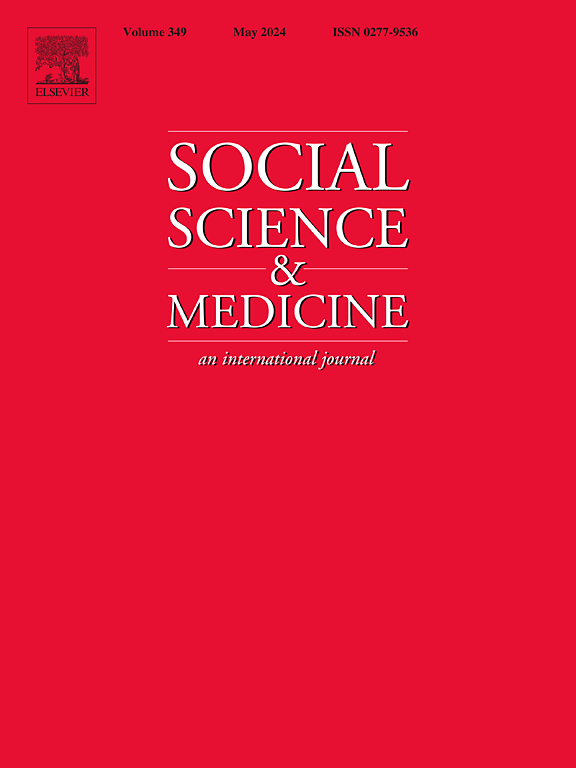Social media prompts to encourage intervening with cancer treatment misinformation
IF 4.9
2区 医学
Q1 PUBLIC, ENVIRONMENTAL & OCCUPATIONAL HEALTH
引用次数: 0
Abstract
Misinformation about false and potentially harmful cancer treatments and cures are shared widely on social media. Strategies to encourage the cancer community to prosocially intervene, by flagging and reporting false posts, are needed to reduce cancer treatment misinformation. Automated prompts encouraging flagging of misinformation are a promising approach to increase intervening. Prompts may be more effective with social cues for others’ actions and clear platform policies. We examined whether prompts alone (referred to as standard prompts) or social cue prompts with a policy for removing posts would lead to more intervening, less sharing, and impact cognitive predictors of the Bystander Intervention Model (e.g., responsibility). We recruited U.S. adults in cancer networks for a within-persons, longitudinal experiment (Time 1–4). We randomized the viewing order of 1) standard prompts or 2) social cue prompts and policy, switching conditions at Time 3. Prompts encouraged intervening (flagging) without leading to other unintended actions. Participants more frequently flagged misinformation (prompted, 24–33 %) than disliking (unprompted, 3–12 %) or liking (unintended, 4–35 %) on the simulated feed. Initially (Time 1–2), social cue prompts (vs. standard) encouraged more willingness to intervene and perceived responsibility, p = .01-0.03; however, there were no differences after (Time 3–4), potentially due to carryover effects. Prompts (also called warnings, nudges, or labels) alerting viewers of cancer treatment misinformation is a promising approach to encourage intervening (flagging). Prompts can be enhanced with social cues (i.e., counts of others who flagged) and clear platform policies to encourage the cancer community to reduce misinformation on social media.
鼓励干预癌症治疗误导的社交媒体提示
社交媒体上广泛传播着虚假的、可能有害的癌症治疗和治愈的错误信息。为了减少癌症治疗误导,我们需要制定策略,鼓励癌症社区通过标记和报告虚假帖子来进行社会干预。鼓励标记虚假信息的自动提示是一种很有前景的增加干预的方法。通过对他人行为的社交提示和明确的平台政策,提示可能会更加有效。我们研究了单纯的提示(称为标准提示)或带有删除帖子政策的社交提示是否会导致更多的干预、更少的分享,以及对旁观者干预模型的认知预测因素(如责任感)的影响。我们在癌症网络中招募了美国成年人进行人内纵向实验(时间 1-4)。我们随机安排了 1) 标准提示或 2) 社会线索提示和政策的观看顺序,并在第 3 个时间段进行了条件转换。提示鼓励干预(标记),但不会导致其他非预期行动。与不喜欢(无提示,3-12%)或喜欢(非故意,4-35%)相比,参与者在模拟信息源上标记错误信息(有提示,24-33%)的频率更高。最初(时间 1-2),社交线索提示(与标准提示相比)鼓励了更多的干预意愿和责任感,p = .01-0.03;然而,之后(时间 3-4)没有差异,这可能是由于延续效应造成的。提示(也称为警告、提示或标签)提醒观众注意癌症治疗的错误信息,是鼓励干预(标记)的一种很有前景的方法。可以通过社交线索(即标记的人数)和明确的平台政策来加强提示,以鼓励癌症社区减少社交媒体上的错误信息。
本文章由计算机程序翻译,如有差异,请以英文原文为准。
求助全文
约1分钟内获得全文
求助全文
来源期刊

Social Science & Medicine
PUBLIC, ENVIRONMENTAL & OCCUPATIONAL HEALTH-
CiteScore
9.10
自引率
5.60%
发文量
762
审稿时长
38 days
期刊介绍:
Social Science & Medicine provides an international and interdisciplinary forum for the dissemination of social science research on health. We publish original research articles (both empirical and theoretical), reviews, position papers and commentaries on health issues, to inform current research, policy and practice in all areas of common interest to social scientists, health practitioners, and policy makers. The journal publishes material relevant to any aspect of health from a wide range of social science disciplines (anthropology, economics, epidemiology, geography, policy, psychology, and sociology), and material relevant to the social sciences from any of the professions concerned with physical and mental health, health care, clinical practice, and health policy and organization. We encourage material which is of general interest to an international readership.
 求助内容:
求助内容: 应助结果提醒方式:
应助结果提醒方式:


